
Солана против Polygon: что лучше?
По мере расширения мира блокчейна каждый день появляется новая платформа, каждая из которых претендует на звание более быстрой, дешевой и эффективной. Среди них Солана (SOL) и Polygon (MATIC), которые выделяются как два главных претендента, каждый из которых привносит свой колорит в криптопространство.
Независимо от того, интересуетесь ли вы молниеносными транзакциями или доступными комиссиями, эти две платформы предлагают особые преимущества, которые соответствуют разным потребностям. В этом руководстве мы рассмотрим основные различия между Solana и Polygon, что поможет вам решить, какая из них может подойти для ваших следующих инвестиций.
Что такое Солана (SOL)?
Солана — это блокчейн-платформа, разработанная для поддержки децентрализованных приложений (dApps) и криптовалют. Запущенная в 2020 году, Solana была создана для решения некоторых из самых больших проблем в мире блокчейнов, таких как медленное время транзакций и высокие комиссии, которые были у более ранних сетей, таких как Bitcoin и Ethereum.
Подробнее:
Платформа использует уникальный механизм консенсуса под названием Proof-of-History (PoH), который позволяет ей обрабатывать транзакции быстрее, чем многие другие блокчейны.
Solana быстро построила процветающую экосистему, которая включает в себя широкий спектр проектов, от платформ DeFi (децентрализованных финансов) до торговых площадок NFT (невзаимозаменяемых токенов). Итак, самыми популярными проектами на Solana являются децентрализованная биржа Serum и торговая площадка NFT Solanart. Собственная криптовалюта сети, известная как SOL, играет жизненно важную роль в этой экосистеме, поскольку используется для стейкинга, покупки и продажи NFT и многого другого.
Для новичков Solana представляет собой захватывающую возможность исследовать мир блокчейна без обычных головных болей из-за низкой скорости и высоких комиссий. Независимо от того, хотите ли вы инвестировать, разрабатывать или просто узнать больше о технологии, Solana предлагает удобную точку входа в мир децентрализованных финансов.
Что такое Polygon (MATIC)?
Polygon, ранее Matic Network, — это масштабируемое решение уровня 2, разработанное для улучшения Ethereum за счет ускорения и удешевления транзакций. Хотя Ethereum является одним из самых популярных блокчейнов, он часто сталкивается с высокими комиссиями и медленным временем транзакций из-за интенсивного использования. Polygon работает вместе с Ethereum, чтобы решить эти проблемы, обрабатывая транзакции вне цепочки и затем защищая их на Ethereum. Это значительно снижает затраты и увеличивает скорость.
MATIC — это собственная криптовалюта Polygon, которая используется для оплаты комиссий за транзакции, защиты сети путем стейкинга и участия в принятии решений по управлению. Polygon стал популярным выбором для разработчиков и пользователей, которые хотят получить преимущества Ethereum без высоких комиссий. Эта масштабируемость и экономическая эффективность делают его доступным вариантом для изучения децентрализованных финансов (DeFi), NFT и других приложений на основе блокчейна.
Подводя итог, можно сказать, что Polygon выступает в качестве «ускорителя» для Ethereum, предлагая более быстрый и дешевый способ взаимодействия с экосистемой Ethereum, при этом извлекая выгоду из ее безопасности и развитой сети.
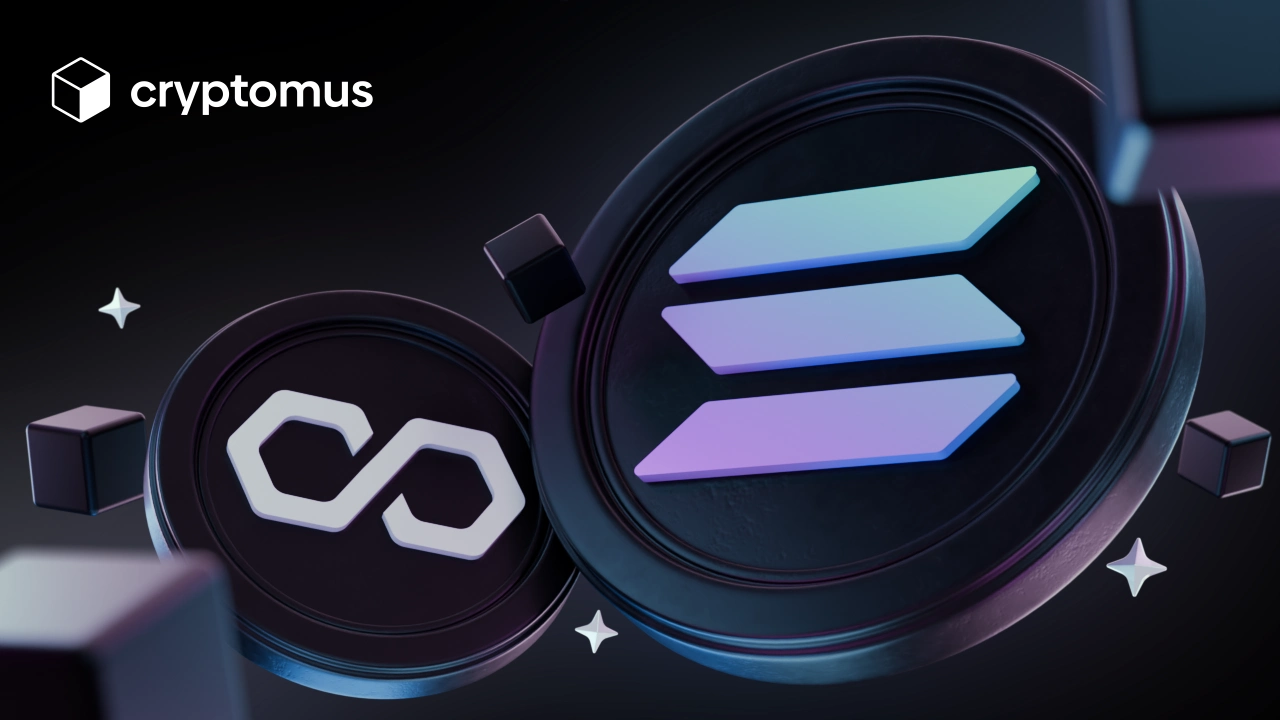
Солана против Polygon: основные различия
Чтобы лучше понять, как Solana и Polygon выглядят рядом друг с другом, давайте рассмотрим их основные различия. Хотя обе платформы нацелены на улучшение производительности блокчейна и пользовательского опыта, они используют разные подходы для достижения этих целей. Вот более подробный обзор того, что отличает Solana и Polygon.
Механизм консенсуса
Solana использует уникальный механизм консенсуса, который сочетает Proof-of-History (PoH) с Proof-of-Stake (PoS). PoH обеспечивает хронологическую запись транзакций, позволяя обрабатывать их параллельно. Он повышает скорость транзакций и сокращает задержку. Этот механизм дополняется PoS, где валидаторы выбираются на основе количества токенов, которые они застейкают. Эта мера обеспечивает как проверку транзакций, так и безопасность сети.
Напротив, Polygon работает как решение уровня 2 для Ethereum и в основном использует Proof-of-Stake (PoS) для консенсуса. Валидаторы в Polygon выбираются на основе их застейканных токенов MATIC, и они обрабатывают транзакции вне цепочки перед отправкой их в основную сеть Ethereum. Polygon также использует дополнительные технологии масштабирования, такие как Plasma и Rollups, которые помогают эффективно обрабатывать и завершать транзакции. Такая настройка позволяет Polygon повысить масштабируемость Ethereum, сохраняя при этом его безопасность.
Скорость криптотранзакций
Одним из самых существенных различий между Solana и Polygon является скорость транзакций. Solana известна своей молниеносной обработкой транзакций, способной обрабатывать до 65 000 транзакций в секунду (TPS). Такая скорость достигается благодаря уникальному механизму консенсуса Proof-of-History от Solana, который позволяет сети обрабатывать транзакции параллельно.
В отличие от этого, Polygon, как решение уровня 2 для Ethereum, зависит от своего базового уровня. В то же время он значительно увеличивает пропускную способность транзакций, объединяя несколько транзакций в одну. Polygon может достигать скорости около 7000 TPS, что значительно быстрее базового уровня Ethereum, но медленнее, чем у Solana.
Комиссии за транзакции
Комиссии за транзакции являются еще одним важным фактором, по которому Solana и Polygon различаются. Solana известна своими невероятно низкими комиссиями, обычно составляющими от 0,00025 до 0,01 доллара за транзакцию. Эта сверхнизкая стоимость делает Solana отличным выбором для высокочастотной торговли, микротранзакций и других видов деятельности, где экономия на комиссиях имеет решающее значение.
Для сравнения, Polygon взимает комиссии за транзакции, которые обычно составляют от 0,01 до 0,10 $ (примерно от 1 до 10 gwei). Хотя эти комиссии все еще значительно ниже, чем часто высокие комиссии Ethereum, которые могут составлять от 20 до 100 gwei за транзакцию (что эквивалентно примерно 0,05–1,00 $ в зависимости от условий сети), они, как правило, выше, чем у Solana. Более низкие комиссии Polygon по сравнению с Ethereum делают его экономически эффективным решением для масштабирования приложений на основе Ethereum, но комиссии Solana являются одними из самых низких в пространстве блокчейнов.
Безопасность
Что касается безопасности, то и у Solana, и у Polygon есть свои сильные стороны. Proof-of-History от Solana в сочетании с Proof-of-Stake предлагает надежную модель безопасности, которая доказала свою эффективность в поддержании целостности сети. Однако Solana столкнулась с некоторыми проблемами, включая периодические сбои в работе сети, что вызвало опасения относительно ее надежности.
Polygon, с другой стороны, выигрывает от модели безопасности Ethereum, поскольку это решение уровня 2. Транзакции в Polygon в конечном итоге защищены Ethereum, который является одной из самых защищенных сетей блокчейнов в мире. Это делает Polygon привлекательным вариантом для проектов, которые уделяют первостепенное внимание безопасности, но требуют более быстрых и дешевых транзакций.
Солана против Polygon: что лучше купить?
Решение о том, Solana или Polygon являются лучшими инвестициями, зависит от различных факторов, включая ваши финансовые цели, толерантность к риску и интерес к определенным экосистемам.
- Polygon может быть лучше Solana, если вы цените сильную интеграцию с сетью Ethereum, более низкие комиссии за транзакции и широкий спектр существующих децентрализованных приложений. Он идеально подходит для тех, кто хочет масштабировать свои проекты в экосистеме Ethereum и использовать ее устоявшуюся инфраструктуру.
- Солана может быть лучше, если вы отдаете приоритет сверхбыстрой скорости транзакций и чрезвычайно низким комиссиям. Его независимый механизм блокчейна позволяет ему обрабатывать до 65 000 транзакций в секунду, что делает его подходящим для высокочастотной торговли и использования инновационных приложений. Однако он столкнулся с некоторыми проблемами стабильности сети.
В конечном счете, выбор зависит от того, предпочитаете ли вы безопасность Polygon и обширную интеграцию с существующими децентрализованными приложениями или высокоскоростную производительность Solana и сверхнизкие комиссии за транзакции как независимого блокчейна. Обе платформы имеют свои сильные стороны и уникальные преимущества, поэтому ваш инвестиционный выбор должен соответствовать вашим конкретным интересам и целям.
Solana против Polygon: сравнение лицом к лицу
Давайте подведем итоги основных моментов. В таблице ниже представлено четкое и краткое сравнение основных характеристик и различий между Solana и Polygon. Это поможет вам оценить, какая платформа лучше подходит для ваших нужд и инвестиционных целей.
| Особенности | Солана (SOL) | Polygon (MATIC) | |
|---|---|---|---|
| Год запуска | Солана (SOL)2020 | Polygon (MATIC)2017 | |
| Механизм консенсуса | Солана (SOL)Proof of History (PoH) + Proof of Stake (PoS) | Polygon (MATIC)Proof of Stake (PoS) | |
| Скорость транзакций | Солана (SOL)До 65 000 TPS | Polygon (MATIC)~7 000 TPS | |
| Средняя комиссия за транзакцию | Солана (SOL)$0,00025 - $0,01 | Polygon (MATIC)$0,01 - $0,10 | |
| Основной вариант использования | Солана (SOL)Высокоскоростные транзакции, DeFi, NFT | Polygon (MATIC)Масштабирование Ethereum, DeFi, NFT | |
| Собственная криптовалюта | Солана (SOL)SOL | Polygon (MATIC)MATIC | |
| Тип сети | Солана (SOL)Независимый блокчейн | Polygon (MATIC)Решение уровня 2 для Ethereum | |
| Модель безопасности | Солана (SOL)Собственная модель безопасности с PoH и PoS | Polygon (MATIC)Обеспечивает транзакции с помощью безопасности Ethereum |
Когда мы завершаем это сравнение Solana и Polygon, становится ясно, что обе платформы предлагают захватывающие и инновационные решения для задач технологии блокчейна. Молниеносная скорость транзакций Solana и невероятно низкие комиссии устанавливают новый стандарт производительности и эффективности, что делает ее привлекательным выбором для тех, кому требуются передовые технологии. С другой стороны, Polygon не только обеспечивает масштабируемость и сниженные комиссии, но и извлекает выгоду из надежной безопасности сети Ethereum, наследуя ее хорошо зарекомендовавшие себя протоколы безопасности. Это делает Polygon практическим улучшением для проектов на основе Ethereum.
В конечном счете, выбор между Солана и Polygon зависит от ваших индивидуальных потребностей и интересов. Независимо от того, привлекает ли вас скорость и независимость Solana или роль Polygon в качестве усилителя сети Ethereum — повышение ее производительности, масштабируемости и снижение комиссий за транзакции — обе платформы представляют собой значительные достижения в области блокчейна. Спасибо!
Оцените статью
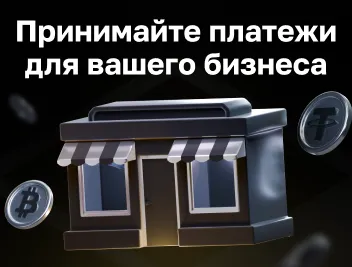
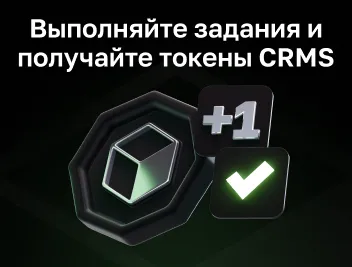
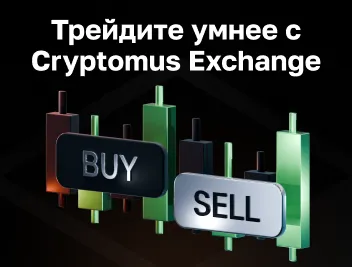

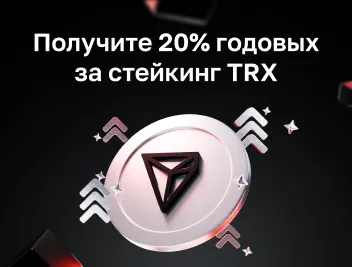



комментариев
0
Вы должны войти в систему, чтобы оставить комментарий